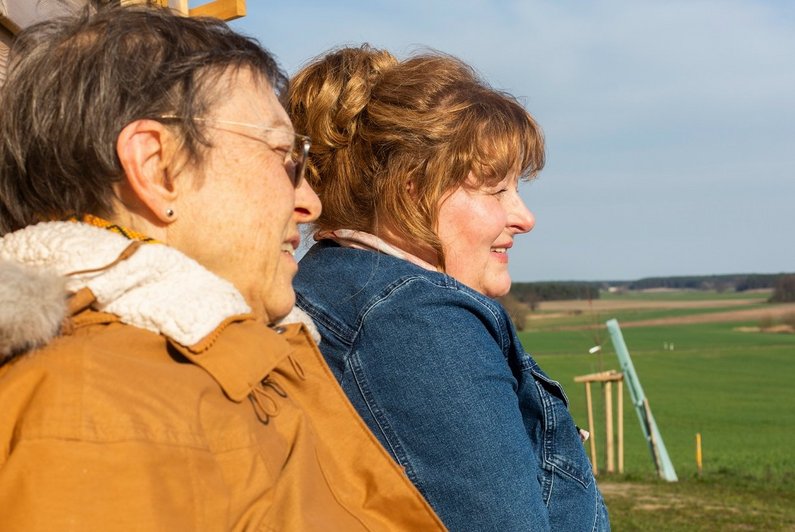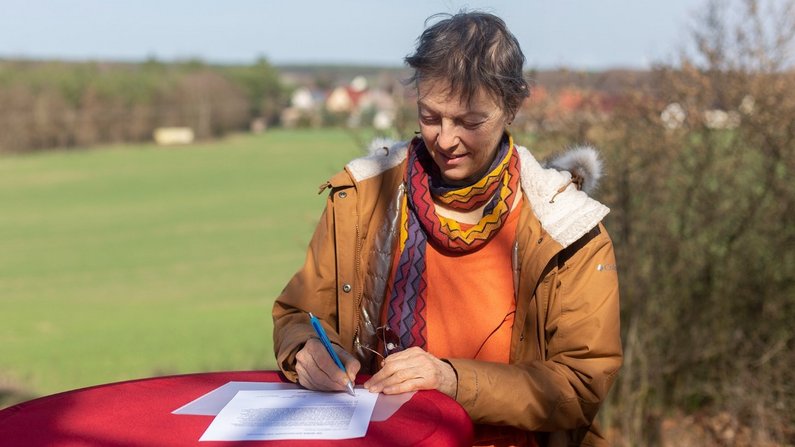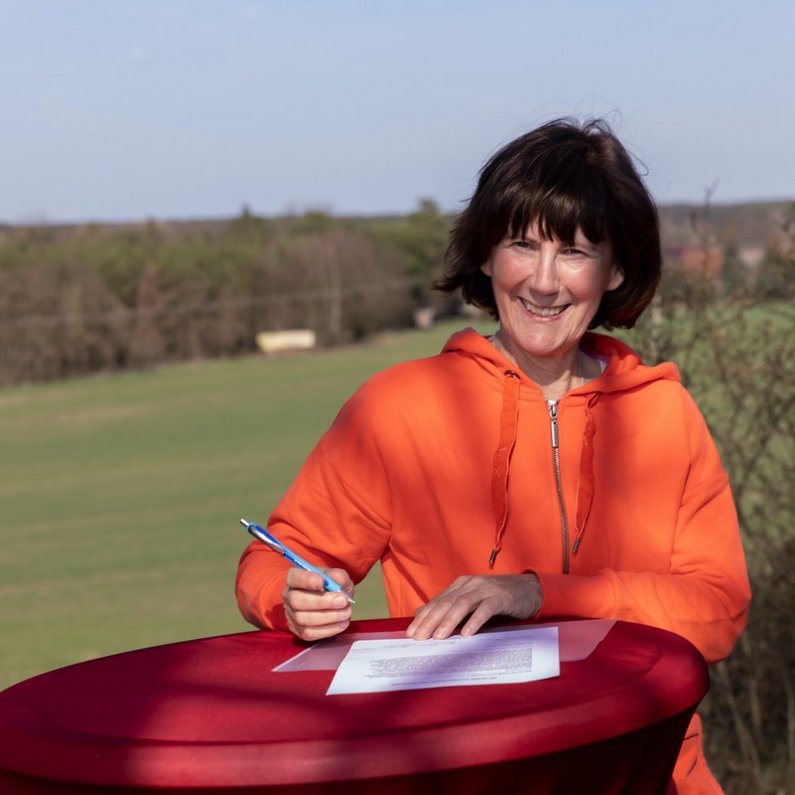Patrons: Jana Nowka, Giuliana Giorgi, Sarah Golly, Florian Jankowsky, Lars Larisch, Josef Lewe, Heidi Sradnick
Commission: Zusammen mit einer*m international tätigen Künstler*in wollen wir ein Kunstwerk schaffen, um unsere Augen für die Vielfalt, die Besonderheiten und die Schätze unserer Stadt in all ihren Teilen zu öffnen. Mit künstlerischen Mitteln soll fühlbar werden, dass wir auf unsere Nachbarn vertrauen und mit ihnen teilen, was unsere Orte so wertvoll und einmalig macht. Wenn die Wege weit sind, müssen wir an der Nähe arbeiten. Darum freuen wir uns auf ein Projekt, das den Reichtum sichtbarer und nachbarschaftliche Nähe leichter macht.
Mediator: Sophia Trollmann
Artist: Mariana Castillo Deball
Duration: 2021 – ongoing
Partners: Kulturstiftung des Bundes (German Federal Cultural Foundation) and the Federal Government Commissioner for the New Federal States (Machen!2021)
Be it one's own garden, the weekend house or the next family celebration – in the city as well as in the countryside, people are increasingly living in their own little worlds. Where life is becoming more digital and the distances to friends, family or public institutions are becoming longer thanks to our mobility, there is often a lack of occasions for exchange and encounters with the immediate environment.
Although a romantic image of the rural area with strong community structures is often contrasted with the individualized big city life, people in the countryside no longer live like they used to. Village closeness no longer falls into anyone's lap. You have to make an effort for it.
One example of this is Friedland: with just under 3,000 inhabitants, Friedland is one of the smallest towns in Germany. The town's 16 districts were merged into one administrative unit after reunification and are spread over an area of about 175 square kilometres. There is little historically grown sense of community in the widely dispersed area.
The desire to reconnect with each other is an underlying melody of many commissioning sites. The New Patrons of Friedland make it the central theme of their commission without detours, in order to let community emerge from joint action.
For why is it actually so difficult to take one's head out of one's hiding and show oneself to others? Where does the concern come from that openness to encounters could be misunderstood as inappropriate curiosity?
The New Patrons of Friedland do not want to resign themselves to the idea that their interest in what and how other people in the village are actually doing and what they are concerned with should be an exception. They believe that others also have a desire to get to know each other, and that perhaps all they lack is the courage and the reason to take the first step towards the others.
Art, they think, could help to find new ways to each other. They wish for new impulses to rediscover the people and the landscape, and to share with each other what their surrounding has to offer.
The commissioning group knows that no work of art can relieve the Friedlanders of their own responsibility to open the garden gates, to welcome each other. But they want to create new occasions and ways that help them to discover and get to know each other.
In a first step, the commissioning group collected treasures from various parts of the village: The special handicraft business, the beautiful bathing place, the special fieldstone wall, the beautiful hiking trails... The central question now is: How can we use this diversity of the parts of the village and the vastness of the landscape between the neighbouring districts to strengthen the connection between the people?
The artist Mariana Castillo Deball, who lives in Berlin and Mexico, has accepted the commission. The artist explores ideologically constructed conditions under which artefacts appear in today's culture. To do this, she gathers information from different disciplines such as archaeology, history and science. Through research and collaboration, she creates works that emerge from the collision and recombination of these different languages.
Already in the development of the artwork, occasions for encounters arise in which local knowledge can be further collected and shared. The physical pathways connecting the local districts are the focus of this search for neighbourly closeness.











